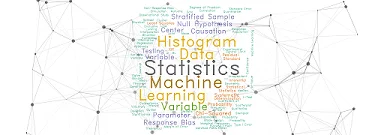Run Test
Run test is a nonparametric test of randomness. The runs test is used to determine whether the order or sequence of observations in a sample is random. A run is a succession of observations that have a particular one of the characteristics.
One Sample
Let $n$ denote the sample size. Let $n_1$ be the number of observations of the first type and $n_2$ be the number of observations of the second type such that $n = n_1+n_2$.
Step 1 Hypothesis : Set up the hypothesis testing problem.
Step 2 Level of Significance : $\alpha$.
Step 3 Compute test Statistics:
If $n_1\leq 20$ and $n_2\leq 20$, use small sample test, otherwise use large sample test (Normal approximation).
Small Sample:
The test statistics is $r$, where $r$ denote the number of runs.
Large Sample :
The test statistics is $Z$, where $$ \begin{aligned} Z&=\frac{r-E(R )}{\sqrt{V(R )}} \end{aligned} $$
$$
\begin{aligned}
E(R ) &= \frac{2n_1n_2}{n_1+n_2}+1
\end{aligned}
$$
$$ \begin{aligned} V(R ) &= \frac{2n_1n_2(2n_1n_2-n_1-n_2}{(n_1+n_2)^2(n_1+n_2-1)} \end{aligned} $$
Step 4 Critical Value :
For Small sample:
obtain the critical value of $r$ from statistical table at $\alpha$ level of significance.
For large sample:
obtain the critical value of $Z$ for given level of significance $\alpha$. That is, $-Z_{\alpha/2}$ and $Z_{\alpha/2}$
Step 5 Conclusion:
- Reject $H_0$, if $r$ is outside the ……….
- Reject $H_0$, if
$Z< -Z_{\alpha/2}$or$Z > Z_{\alpha/2}$.
Step 6 Decision:
Related Resources
Suggestions and comments will be appreciated.


